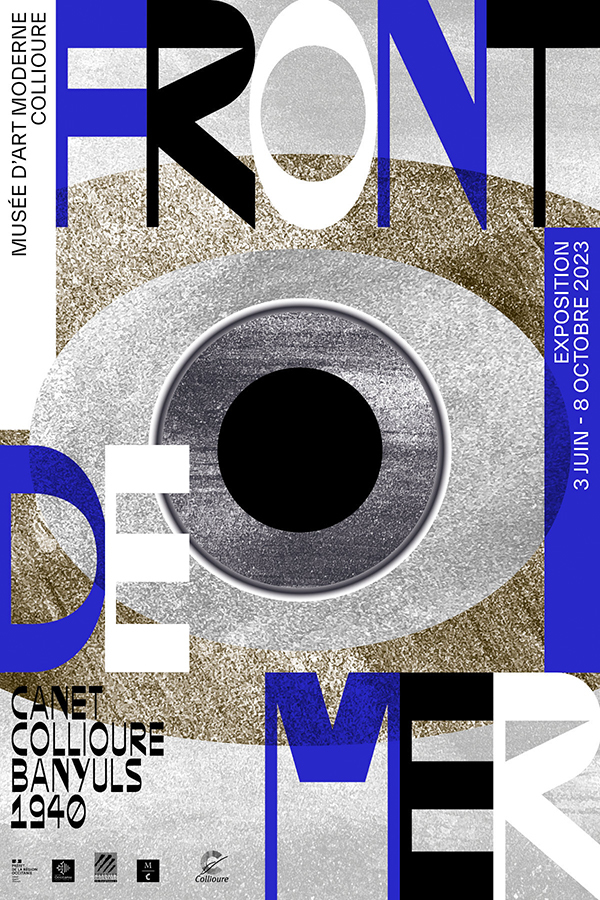En cours
A Venir
Billetterie
Collections en ligne
Actualités
Boutique
Restaurants et privatisation
vendredi 28 juillet
The Artistic History of the Vermilion Coast at the Collioure Museum

Throughout the 20th century, Collioure has consistently been a major center for the history of modern art. Paul Signac visited in 1887, and later in 1905, Henri Matisse and André Derain made an important stay that marked the advent of the Fauvist movement. The founders were followed by key representatives such as Henri Manguin, Pierre Marquet, and Charles Camoin. The exhibition “Front de mer. Canet-Collioure-Banyuls 1940” pays homage to this rich local artistic history, spanning the entire coast and including the towns of Céret and Banyuls, where Aristide Maillol was born and raised.
This event aligns itself with the cultural project of the Collioure Modern Art Museum, where temporary exhibitions explore the multifaceted aspects of the artistic history of the Catalan coast. “Front de mer. Canet-Collioure-Banyuls 1940” follows in the footsteps of the 2022 exhibition “Collioure, Babel des arts” and the 2019-2020 exhibition “Jean-Baptiste des Gachons. Rêver Picasso”, which emphasized the importance of color as a major artistic characteristic in paintings originating from Collioure.
Established in 1985 within Villa Pams, facing the “Méditerranée”, the Collioure Museum appears as the ideal venue for presenting this subject that combines the artistic qualities of the area, born from the marriage of the sea and the sun, with its history around the year 1940 when the Vermilion Coast became a battleground and a crossroad for artists grappling with the tumult of occupied France.
“Harmonie” Returns to the Catalan Coast
Around the year 1940, Aristide Maillol was not exempt from the consequences of war. Starting in September 1939, the artist withdrew to Banyuls, where he remained throughout the Occupation until his death in 1944. His hometown and the Catalan coast became the stage for his final life-size sculpture, “Harmonie”.

During this period, Maillol collaborated with Dina Vierny, whom he had met at his studio in Marly-le-Roi in 1934. More than just a model, she also assisted the sculptor in his work [1]. Vierny undertook numerous journeys between Banyuls, Marseille, where she visited artists seeking refuge in the so-called free zone, Lyon, Paris, and Montpellier, where she studied chemistry [2]. Her frequent travels, along with her involvement in organizing clandestine networks to help people in exile cross the Spanish border, resulted in two arrests in 1941 and 1943, and with an imprisonment in Fresnes, from which she emerged unscathed thanks to Maillol’s intervention [3].
Dina Vierny, who served as the model for “Harmonie”, thus became the main protagonist of Maillol’s last war years in Banyuls. Around 1940, the sculptor conceived the project for this life-size sculpture, envisioning it to be different from his previous creations. The work indeed stands out with its new exploration of subtle movement and a closer study of the model and nature [4]. This innovative approach led him to temper his traditional architectural approach to sculpture. According to Vierny herself, the sculptor followed his preference for torsos by starting with the modeling of “Harmonie” torso but delayed completing the arms, which he did not like [5]. The artist’s accidental death in 1944 occurred before he could finish the work, leaving it incomplete.

As an emblematic work from the last war years on the Catalan coast, “Harmonie” rightfully deserves its place in the exhibition’s narrative in Collioure.
Bibliography :
Aristide Maillol (1861-1944). La quête de l’harmonie, sous la direction d’Ophélie Ferlier-Bouat et Antoinette Le Normand-Romain (cat. exposition, musée d’Orsay, Paris, 12 avril-21 août 2022, Kunsthaüs, Zürich, 7 octobre 2022-22 janvier 2023, musée d’Art et d’industrie – André Diligent, Roubaix, 18 février-21 mai 2023), Paris, Gallimard, 2022.
Isabelle Cahn, Jean-Luc Daval, Bertrand Lorquin, Antoinette Le Normand-Romain, Dina Vierny, L’ABCdaire de Maillol, Paris, Flammarion, 1996.
[1] Cat. Exp. Paris, 2022, « Dina : l’invention de Maillol », Nathalie Houzé, p. 321.
[2] Ibid., p. 321.
[3] Cat. Exp. Paris, 2022, « Dina : l’invention de Maillol », Nathalie Houzé, p. 321.
[4] L’ABCdaire de Maillol, Paris, 1996, « Harmonie », Dina Vierny, p. 66.
[5] Ibid., p. 66
Find out more about our current exhibtion : Andres Serrano. Portraits of America
DISCOVERMentions légales | CGU | Données personnelles | Gestion des cookies
Musée Maillol, 2021
Mentions légales | CGU | Données personnelles | Gestion des cookies
Musée Maillol, 2021